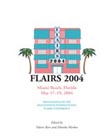Published:
May 2004
Proceedings:
Proceedings of the Seventeenth International Florida Artificial Intelligence Research Society Conference (FLAIRS 2004)
Volume
Issue:
Proceedings of the Seventeenth International Florida Artificial Intelligence Research Society Conference (FLAIRS 2004)
Track:
All Papers
Downloads:
Abstract:
Novelty detection in time series is an important problem with application in different domains such as machine failure detection, fraud detection and auditing. An approach to this problem uses time series forecasting by neural networks. However, time series forecasting is a difficult problem, thus, the use of this technique for time series novelty detection is sometimes criticized. Alternatively, a number of different classification-based techniques have been recently proposed for this problem. The idea of these methods is to learn to classify time series windows as normal or novelty. Unfortunately, in many cases of interest there are only normal data available for training. Several of the classificationbased techniques tackle this problem by adding random negative samples to the training set. In some cases the performance of the novelty detection method depends on the number of random negative samples added and selection of this number can be a problem. In this work, we present a method for novelty detection in time series based on RBF neural networks. The proposed method does not need negative samples and is based on the dynamic decay adjustment (DDA) algorithm for RBF networks training. We have carried out a number of experiments using four real-world time series, whose results have shown that the performance of the method proposed in this work is much better than that of a method that needs negative samples.

FLAIRS
Proceedings of the Seventeenth International Florida Artificial Intelligence Research Society Conference (FLAIRS 2004)
ISBN 978-1-57735-201-3
Published by The AAAI Press, Menlo Park, California.
